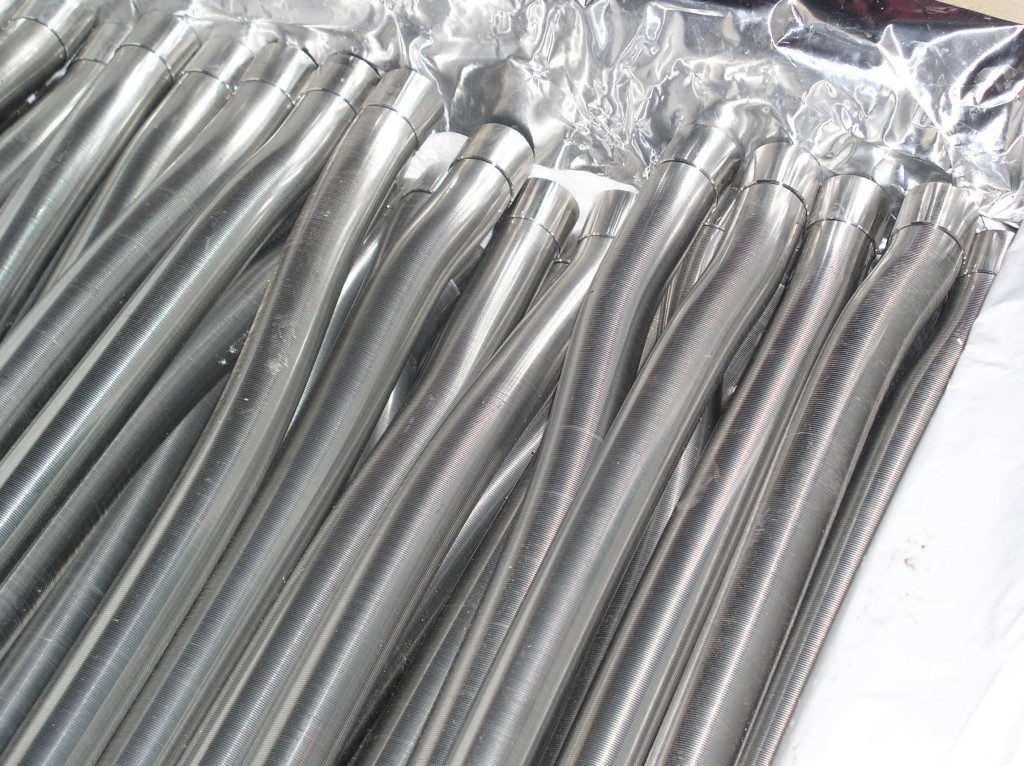The insured was one of the biggest and most modern companies in the brewing industry in Poland, based on many years’ experience in beer brewing. The loss was caused by bent candles in the filter for beer filtration through diatomaceous soil. The candles were bent about 50 cm down from the cover. This was the reason for the candles’ dislocation, which caused various spaces between candles and diminished filtration efficiency.
The object’s candles were placed inside filters whose task was to separate the earth sediments and yeast from beer.
The filtration process followed through diatomaceous soil. The filter was located in a filtration hall, between storage and intermediary tanks. The candle consists of a regular built-in spiral with spaces between twists secured by oblong profile welded eighttimes over. The spaces between twists permit the beer flow. The candles are smaller on inflow and larger on outflow as a result of the assignment of radial profile – making it impossible to clog the throughflow.
All the filter candles are fastened in nests to the plate by a special cap and pull out from underneath for disassembly.
The force of screwing (max. 120 Nm) when the candles are being installed should impact exclusively on the screws themselves and not on the candles, in order to keep the space between the spiral twists.
During periodic mechanical cleaning the candles can be washed from above by a water gun at an open valve. The candles disassembly is not required. On the day of the discovery of the loss, one of the brewery workers looked into the viewfinder of the filter and noted damage to the candles. About 50% of the candles in use were bent. The bending was a deviation from the plumb line of about 0,5 m from the point of suspension and the displacement of space between the candles.
According to the claimant’s statement, on the day before the loss was discovered, there were no signs of candles damage. During the filtration process, the diatomaceous earth did not diffuse into the beer.
The last inspection of the filter took place six months before the loss discovery, and this inspection included candle cleaning. It was not possible to settle the date of loss, so we assumed the event took place during this 6 month period. The candles could be damaged as a result of:
– Overload of the filter caused by a poor solution of diatomaceous soil resulting from e.g. change of specific gravity of soil and changes of granulation,
– Pollution of the candles,
– Too low a temperature of beer given on the filter,
– Fall of pressure and fall of diatomaceous soil from candles in the case of a break in or fall of the minimum speed
of filtration.
In our opinion, based on information received and after analysis of similar events in other breweries, the most probably cause of loss could be:
– too low temperature of beer given on the filter – causing crystallisation of the beer (granules in the beer), and as a consequence clogging of cracks, increasing pressure and bending the candles,
– beer filtration break caused by the candle filter resulting from a fall of pressure and fall of diatomaceous soil, The construction of the candles (macro cracks) does not permit the repair or regeneration of damaged candles. The only one method of damage reparation is exchange for new candles.










